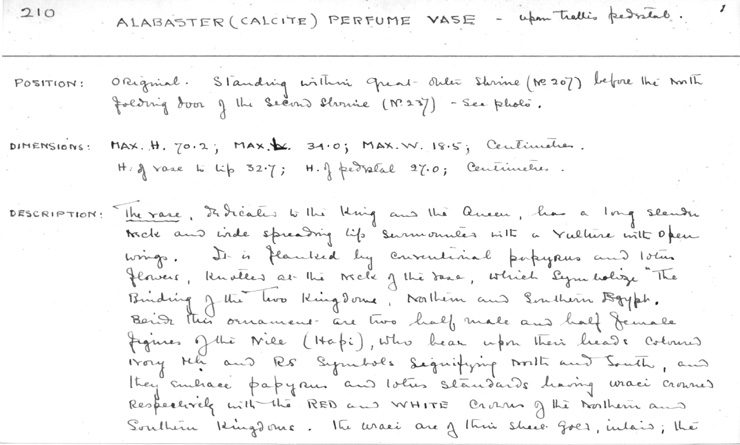Handlist description: Alabaster (calcite) perfume vase, upon trellis pedestal
Card/Transcription No.: 210-1
210 ALABASTER (CALCITE) PERFUME VASE - upon trellis pedestal.POSITION: Original. Standing within great outer shrine (No. 207) before the north folding door of the second shrine (No. 237) - see photo.
DIMENSIONS: MAX. H. 70.2; MAX. L. 34.0; MAX. W. 18.5; centimetres. H. of vase to lip 32.7; H. of pedestal 27.0; centimetres.
DESCRIPTION: The vase, dedicated to the King and the Queen, has a long slender neck and wide spreading lip surmounted with a vulture with open wings. It is flanked by conventional papyrus and lotus flowers, knotted at the neck of the vase, which symbolize "The Binding of the Two Kingdoms, Northern and Southern Egypt". Beside this ornament are two half male and half female figures of the Nile (Hapi), who bear upon their heads coloured ivory Mh and Rs symbols signifying North and South, and they embrace papyrus and lotus standards having uraei crowned respectively with the RED and WHITE crowns of the Northern and Southern Kingdoms. The uraei are of thin sheet gold, inlaid, the
